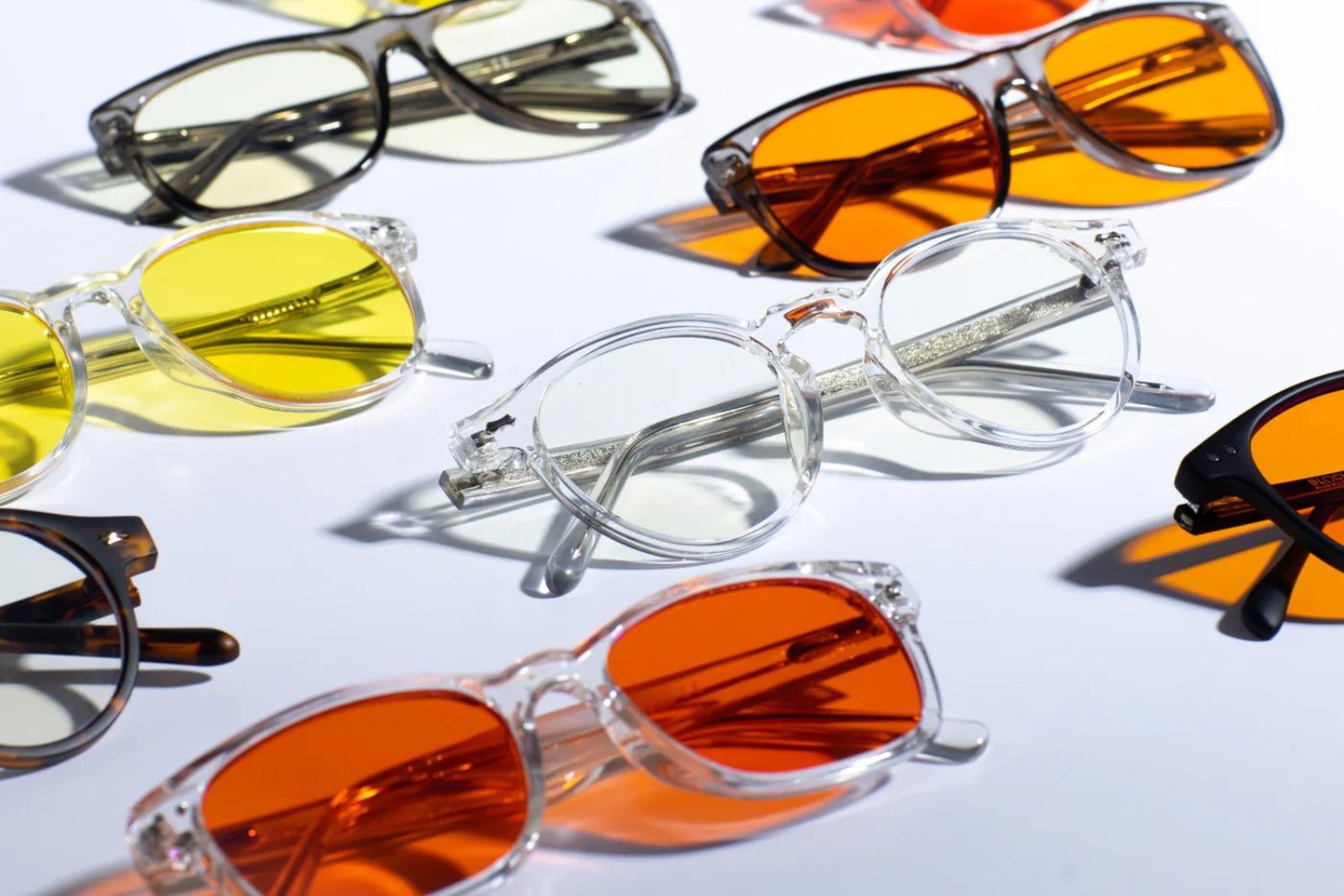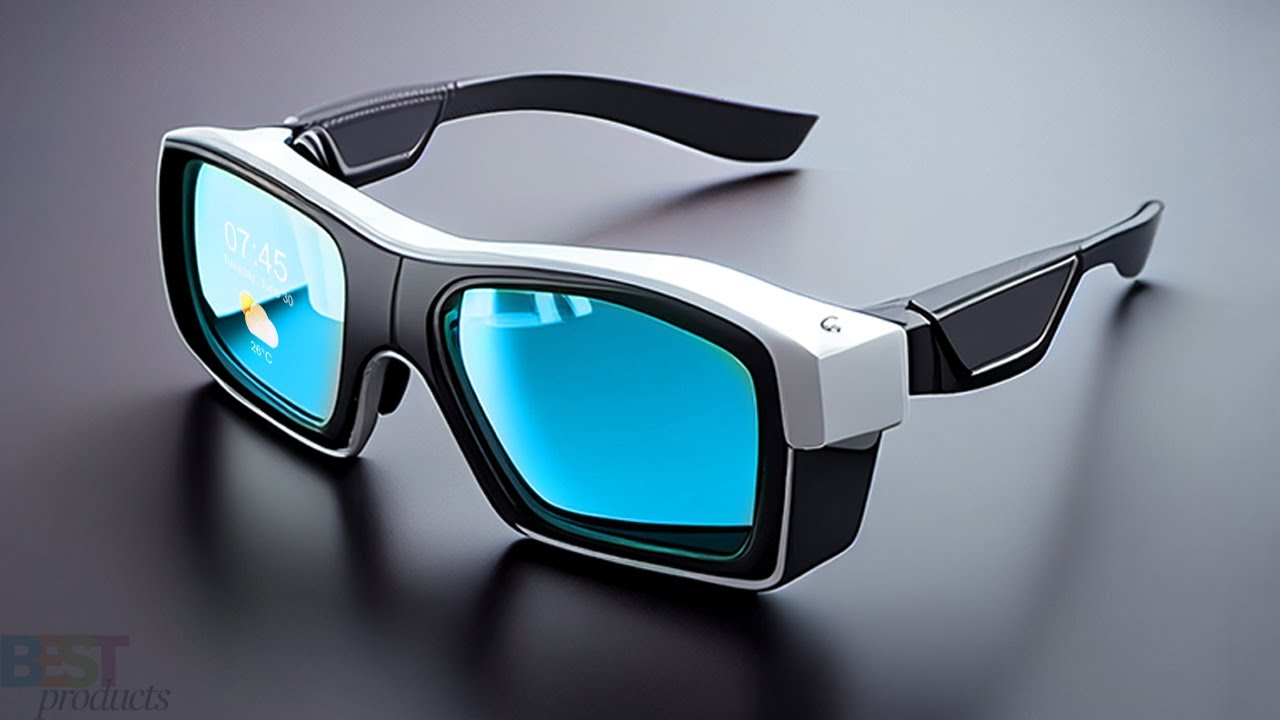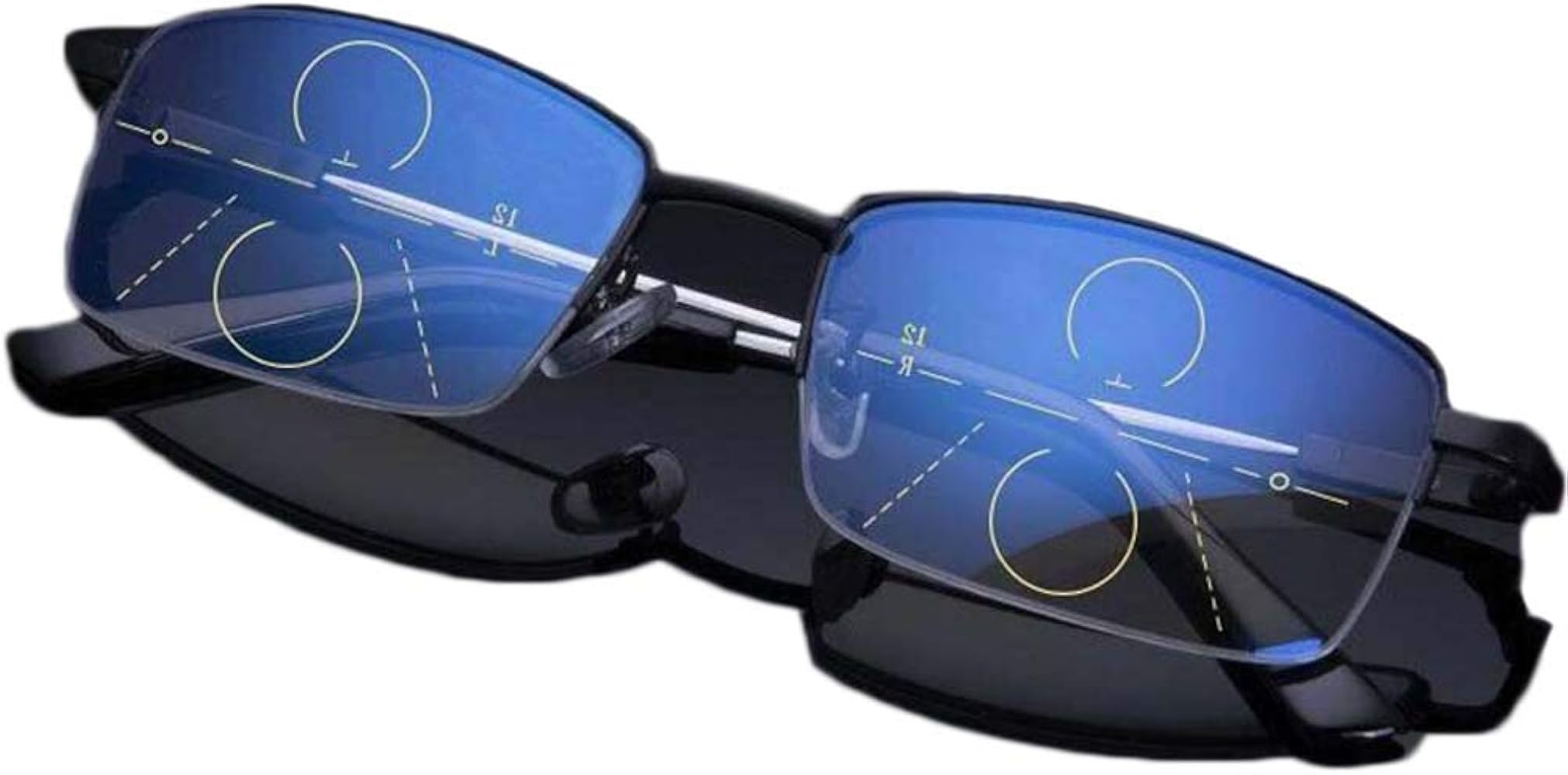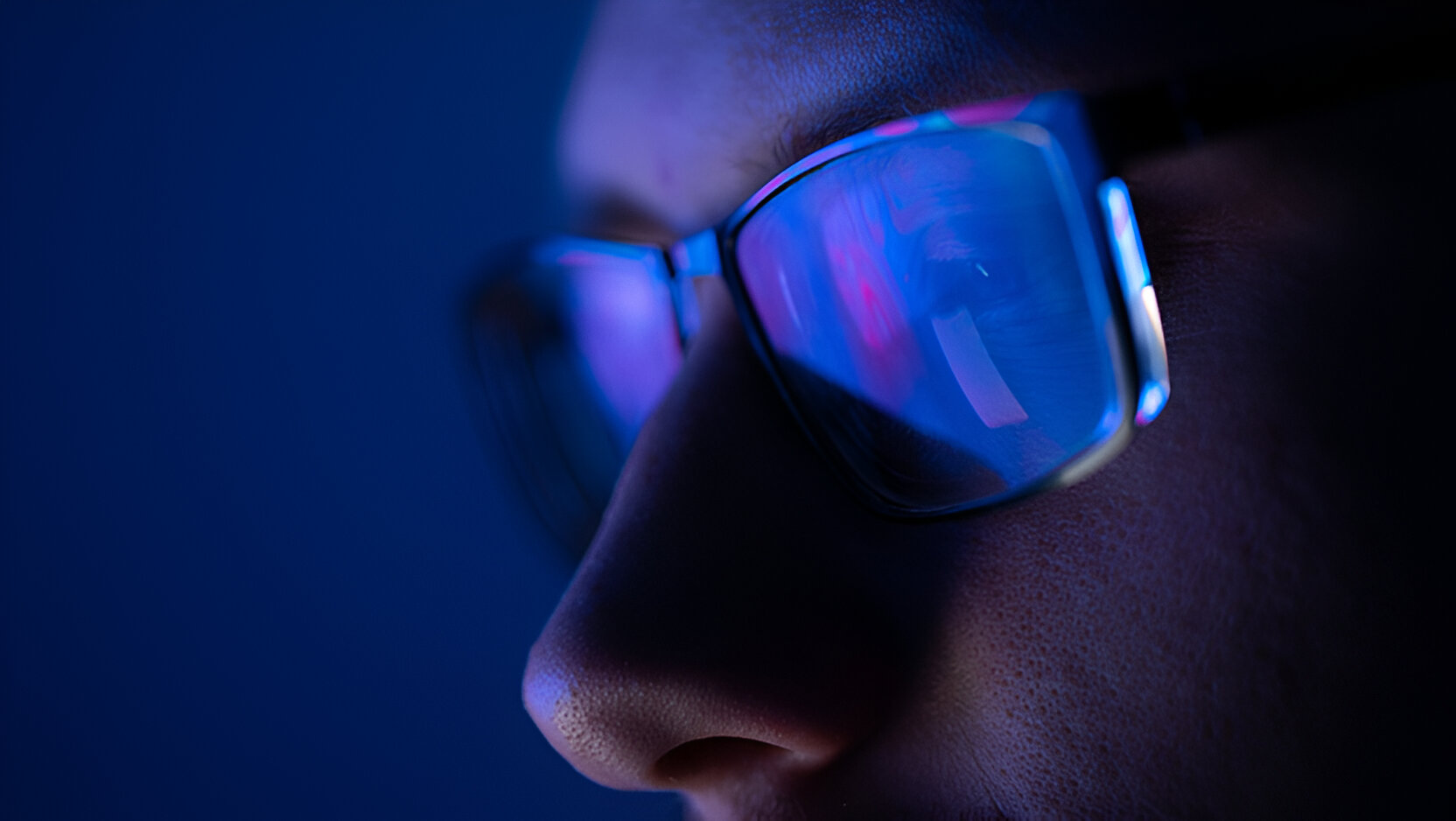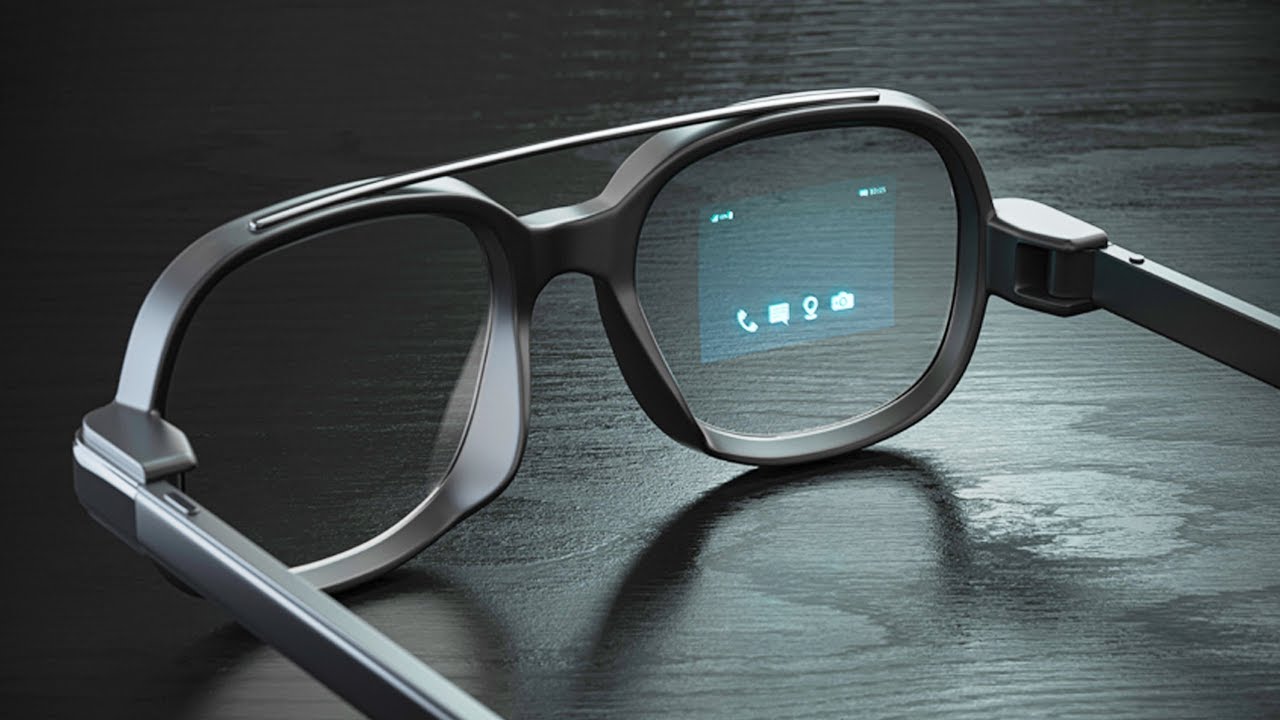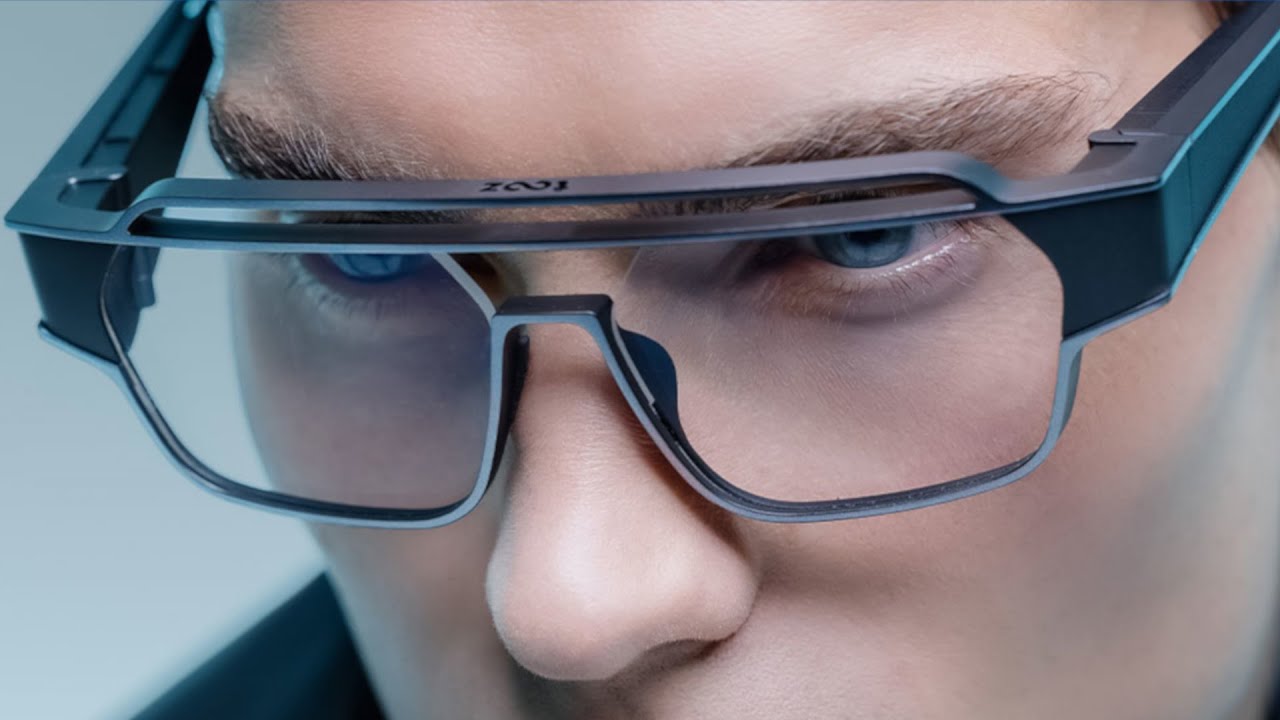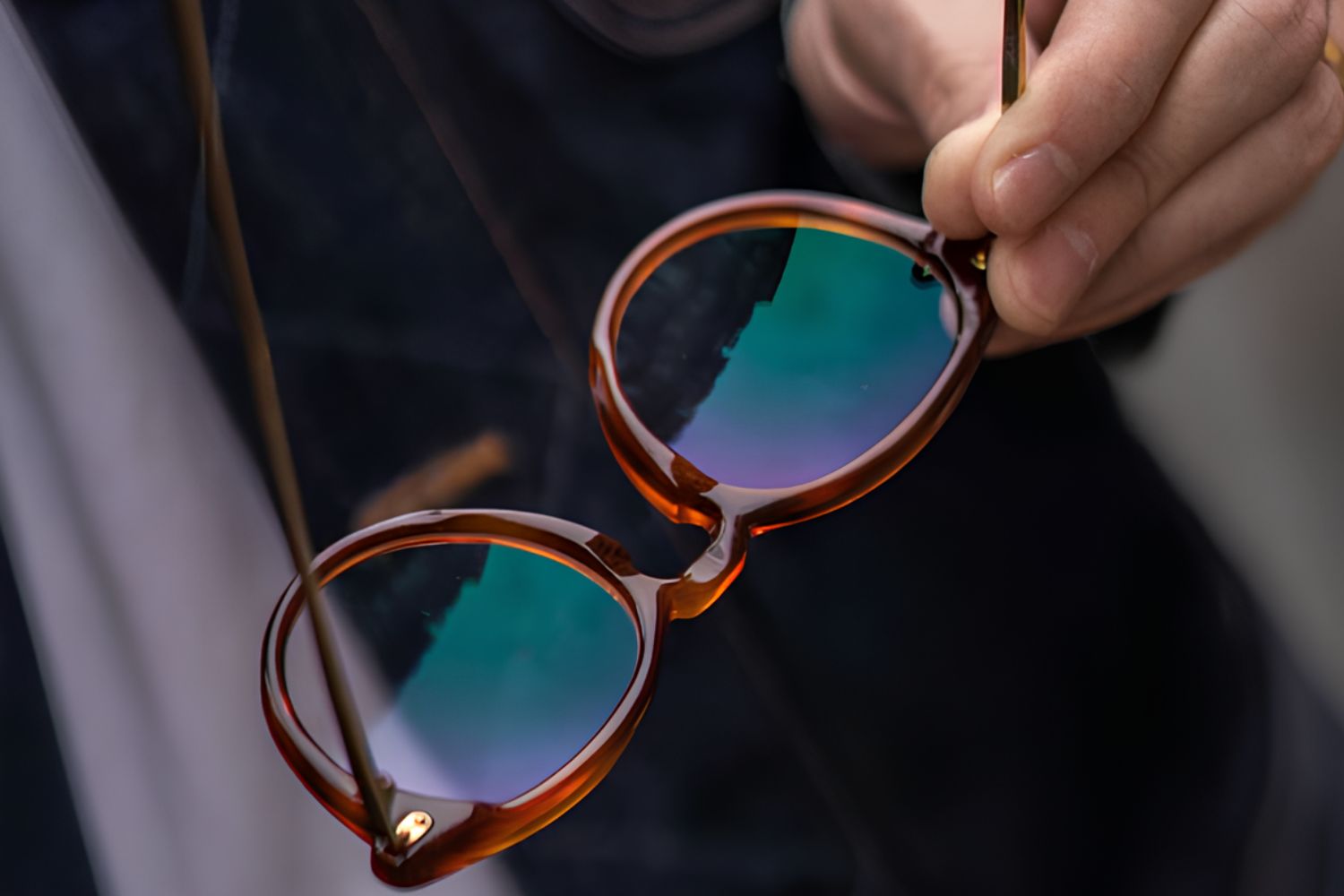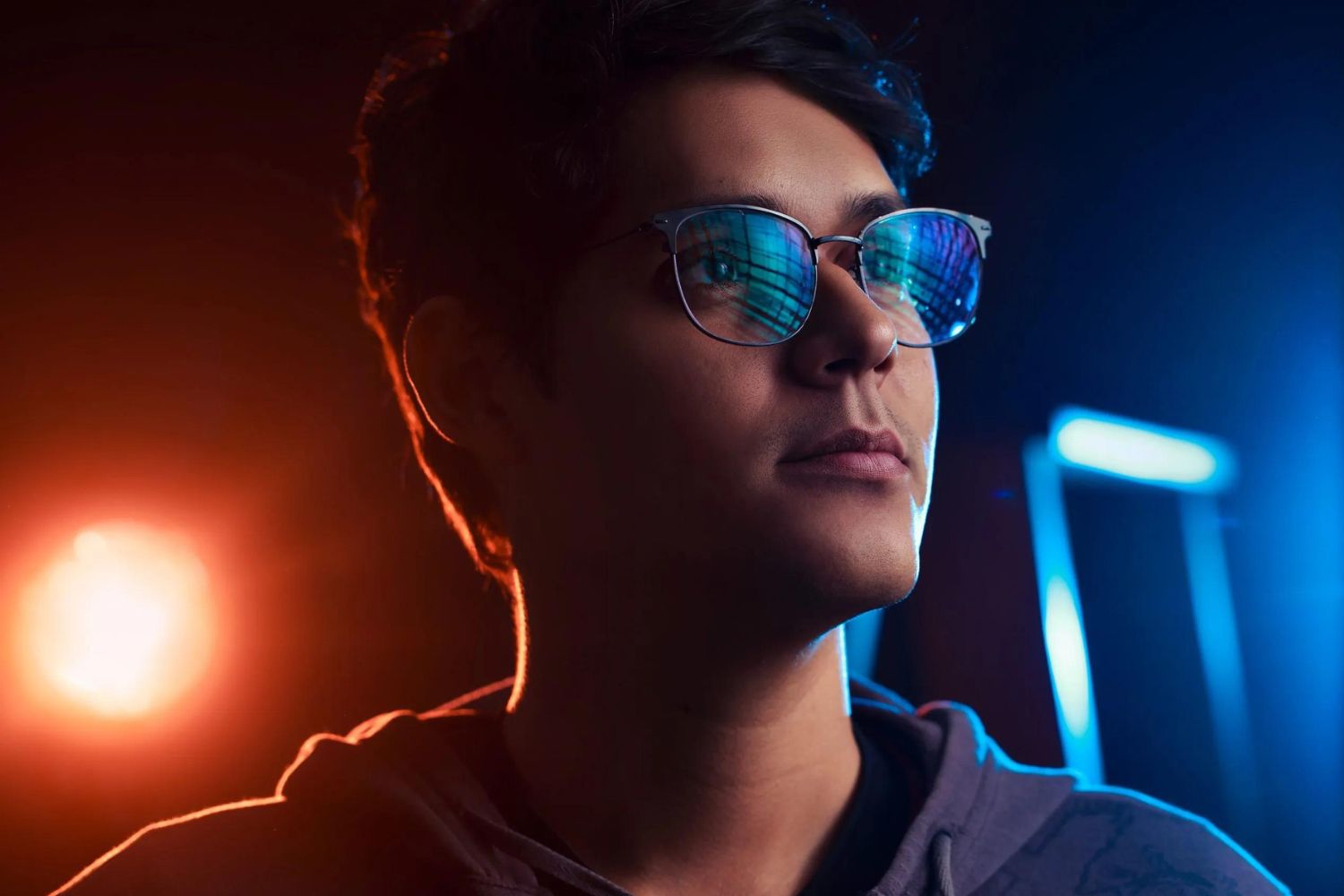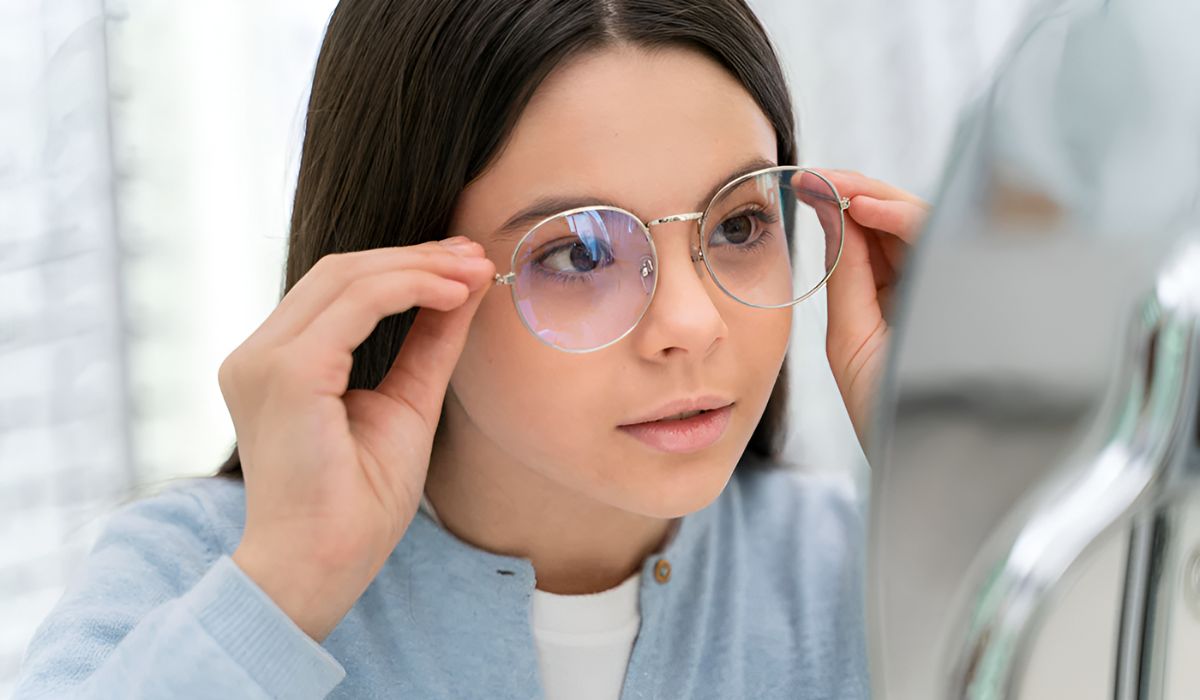Introduction
In today's digital age, our lives are intertwined with screens, from smartphones and tablets to computers and televisions. While these devices have undoubtedly revolutionized the way we live, work, and communicate, they also expose us to a significant amount of blue light. The increasing prevalence of digital screens has raised concerns about the potential impact of blue light on our eyes and overall well-being.
As we spend more time in front of screens, the need to protect our eyes from the potential harmful effects of blue light has become increasingly important. This is where blue light blocking lenses come into play. These specialized lenses are designed to mitigate the negative impact of blue light, offering a potential solution to alleviate eye strain, improve sleep quality, and protect long-term eye health.
In this article, we will delve into the world of blue light and explore the effects it has on our eyes. We will also discuss how blue light blocking lenses work to shield our eyes from its potentially harmful effects. Additionally, we'll provide valuable insights into the key factors to consider when choosing blue light blocking lenses, empowering you to make informed decisions about protecting your eyes in the digital age. So, let's embark on this enlightening journey into the realm of blue light and the lenses that aim to safeguard our vision.
What is Blue Light?
Blue light is a high-energy, short-wavelength light that is part of the visible light spectrum. It is emitted by the sun, as well as artificial light sources such as LED lighting, fluorescent bulbs, and the screens of electronic devices. This type of light is known for its ability to penetrate deep into the eye, reaching the retina.
One of the primary sources of blue light exposure in modern times is digital screens. Whether it's the glow of a smartphone, the illumination of a computer monitor, or the radiance of a television, these devices emit significant amounts of blue light. As a result, prolonged exposure to screens has raised concerns about the potential impact of blue light on eye health.
Moreover, blue light plays a crucial role in regulating our circadian rhythm, or our internal body clock. Exposure to blue light during the day helps to boost attention, reaction times, and mood. However, excessive exposure to blue light, particularly in the evening and nighttime, can disrupt the body's natural sleep-wake cycle. This can lead to difficulties falling asleep and result in poor sleep quality, which can have far-reaching implications for overall health and well-being.
In addition to its effects on sleep patterns, research suggests that prolonged exposure to blue light may contribute to digital eye strain. This can manifest as symptoms such as dry eyes, blurred vision, headaches, and neck or shoulder pain, commonly experienced after extended periods of screen use.
Understanding the nature of blue light and its prevalence in our daily lives is crucial in recognizing the potential impact it may have on our eyes and overall health. With this knowledge, we can explore effective measures, such as blue light blocking lenses, to mitigate the potential negative effects and safeguard our vision in the digital age.
The Effects of Blue Light on the Eyes
Prolonged exposure to blue light, particularly from digital screens, has raised concerns about its potential impact on eye health. The eyes are highly sensitive organs, and the increasing prevalence of digital devices has led to a surge in blue light exposure. Understanding the effects of this pervasive light on the eyes is crucial in recognizing the importance of protective measures such as blue light blocking lenses.
Digital Eye Strain
One of the primary effects of blue light on the eyes is the manifestation of digital eye strain, also known as computer vision syndrome. This condition encompasses a range of symptoms that occur after prolonged screen use, including dry eyes, blurred vision, eye fatigue, headaches, and neck or shoulder pain. The eyes are not adept at blocking blue light, allowing it to penetrate deep into the retina. This can lead to visual discomfort and strain, impacting productivity and overall well-being.
Disruption of Sleep Patterns
Excessive exposure to blue light, particularly in the evening and nighttime, can disrupt the body's natural sleep-wake cycle. Blue light plays a pivotal role in regulating the circadian rhythm, and its presence in the evening can suppress the production of melatonin, a hormone that regulates sleep. This disruption can lead to difficulties falling asleep and result in poor sleep quality. Over time, inadequate sleep can have profound implications for overall health, affecting mood, cognitive function, and physical well-being.
Potential Long-Term Impact
While research on the long-term effects of blue light is ongoing, there are concerns about its potential impact on long-term eye health. Some studies suggest that prolonged exposure to blue light may contribute to retinal damage, increasing the risk of age-related macular degeneration, a leading cause of vision loss. This underscores the importance of taking proactive measures to reduce blue light exposure and protect the eyes from potential harm.
In light of these effects, it is essential to recognize the significance of minimizing blue light exposure, particularly from digital screens, and taking proactive steps to mitigate its potential impact on eye health. This includes considering the use of blue light blocking lenses to provide a layer of defense against the pervasive influence of blue light in our modern, screen-centric lifestyles.
How Lenses Block Blue Light
Blue light blocking lenses employ specialized technology to mitigate the potentially harmful effects of blue light on the eyes. These lenses are designed to selectively filter out a portion of blue light, reducing its impact on the eyes while maintaining visual clarity and color perception. Understanding how these lenses function to block blue light provides valuable insight into their role in safeguarding eye health in the digital age.
Lens Coatings
One of the primary mechanisms through which lenses block blue light is the application of specialized coatings. These coatings are designed to selectively filter out blue light wavelengths while allowing other wavelengths of light to pass through. By targeting the specific range of blue light associated with digital screens and artificial light sources, these coatings help reduce the amount of blue light that reaches the eyes. This can alleviate the strain on the eyes caused by prolonged exposure to screens, potentially mitigating symptoms of digital eye strain and supporting overall visual comfort.
Filtering Technology
Blue light blocking lenses often incorporate advanced filtering technology that targets the specific wavelengths associated with blue light. This technology allows the lenses to effectively block a portion of blue light while maintaining optimal visual acuity and color perception. By selectively filtering out blue light, these lenses aim to minimize the potential negative effects of blue light exposure, such as digital eye strain and disrupted sleep patterns. This proactive approach to reducing blue light exposure underscores the importance of protecting the eyes in an increasingly screen-dominated world.
Material Composition
The material composition of blue light blocking lenses also plays a crucial role in their ability to block blue light effectively. These lenses are crafted using materials that are specifically engineered to absorb and deflect a portion of blue light, thereby reducing its impact on the eyes. By integrating these specialized materials into the lens design, manufacturers aim to provide a reliable defense against the pervasive influence of blue light, offering users a means to mitigate its potential effects on eye health.
In essence, blue light blocking lenses leverage a combination of coatings, filtering technology, and specialized materials to create a protective barrier against the potentially harmful effects of blue light. By incorporating these innovative features, these lenses strive to offer users a proactive solution to address the challenges posed by prolonged screen exposure, supporting visual comfort and long-term eye health in the digital era.
Factors to Consider When Choosing Blue Light Blocking Lenses
When selecting blue light blocking lenses, several key factors should be taken into account to ensure optimal eye protection and visual comfort in various settings. Understanding these factors can empower individuals to make informed decisions when choosing lenses that effectively mitigate the potential impact of blue light. Here are essential considerations to keep in mind:
Lens Transparency and Clarity
The transparency and clarity of blue light blocking lenses are crucial considerations. While effectively filtering out blue light, these lenses should maintain optimal visual clarity and color perception. High-quality blue light blocking lenses are designed to minimize color distortion and maintain natural vision, ensuring that users can engage in various activities without compromising visual acuity.
Blue Light Filtering Efficacy
The efficacy of blue light filtering is a critical factor when selecting lenses. Different blue light blocking lenses offer varying degrees of protection, with some targeting specific wavelengths associated with digital screens and artificial light sources. Understanding the filtering efficacy of these lenses can help individuals choose options that align with their specific needs, whether for extensive screen use or general daily activities.
Frame Compatibility and Style Preferences
Considering the compatibility of blue light blocking lenses with different frame styles is essential for ensuring a seamless and comfortable fit. Whether opting for prescription glasses or non-prescription blue light blocking eyewear, individuals should assess the compatibility of these lenses with their preferred frames. Additionally, considering style preferences can enhance the overall experience, as individuals seek to integrate protective lenses seamlessly into their daily routines.
UV Protection
In addition to mitigating the impact of blue light, many blue light blocking lenses offer built-in ultraviolet (UV) protection. UV rays, particularly UV-A and UV-B, can pose risks to eye health, making the inclusion of UV protection a valuable feature. By choosing lenses that offer comprehensive protection against both blue light and UV rays, individuals can prioritize holistic eye care and long-term visual well-being.
Durability and Maintenance
Assessing the durability and ease of maintenance of blue light blocking lenses is essential for long-term satisfaction. High-quality lenses are designed to withstand daily wear and tear, offering scratch-resistant coatings and easy cleaning solutions. Considering the durability and maintenance aspects can contribute to a positive experience, ensuring that protective lenses remain effective and reliable over time.
By carefully considering these factors, individuals can make informed decisions when selecting blue light blocking lenses, aligning their choices with their unique visual needs and lifestyle preferences. Prioritizing visual comfort, eye protection, and style compatibility can lead to a rewarding experience with blue light blocking lenses, supporting overall eye health in the digital age.
Conclusion
In conclusion, the prevalence of blue light in our modern, screen-centric lifestyles has prompted a growing need for protective measures to safeguard eye health and overall well-being. The effects of blue light on the eyes, including digital eye strain and disruptions to sleep patterns, underscore the importance of addressing the potential impact of prolonged screen exposure. Blue light blocking lenses serve as a proactive solution to mitigate these effects, offering a layer of defense against the pervasive influence of blue light.
The advancements in lens technology, including specialized coatings, filtering mechanisms, and optimal material composition, enable blue light blocking lenses to effectively reduce the impact of blue light on the eyes while maintaining visual clarity and color perception. By leveraging these innovative features, these lenses aim to alleviate the strain caused by prolonged screen exposure, supporting visual comfort and long-term eye health.
When selecting blue light blocking lenses, considerations such as transparency and clarity, filtering efficacy, frame compatibility, UV protection, and durability play pivotal roles in ensuring optimal eye protection and visual comfort. By evaluating these factors, individuals can make informed choices that align with their specific visual needs and lifestyle preferences, enhancing the overall experience with blue light blocking lenses.
As we navigate the digital age, the proactive adoption of blue light blocking lenses can contribute to a holistic approach to eye care, promoting long-term visual well-being and mitigating the potential negative effects of blue light exposure. By integrating these lenses into daily routines, individuals can prioritize eye health and comfort, empowering themselves to engage with digital devices while minimizing the associated risks.
In essence, the journey into the realm of blue light and the lenses designed to block it has shed light on the importance of proactive eye protection in the face of increasing screen exposure. By understanding the effects of blue light on the eyes and the role of blue light blocking lenses in mitigating these effects, individuals can make informed decisions to prioritize their visual comfort and long-term eye health in the digital era.







